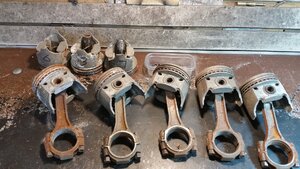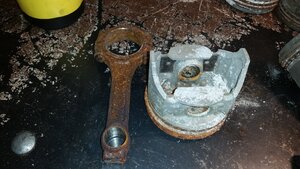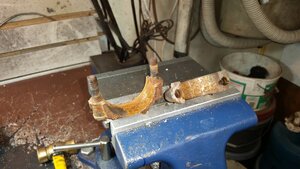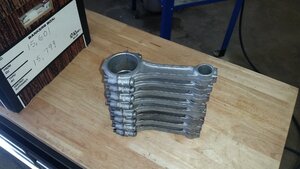My buddy Al had been chipping away at this 65 El Camino for as long as I've known him, more than 30 years. He's a licensed, highly skilled autobody technician, now retired. Like me he now has time to take on and finish projects we didn't have time for while we were still had those pesky jobs. Some 20 years ago I rebuilt the heads for this engine and now that the body work is getting close to finished Al wants to get the rest of the engine ready. He dropped off the block, crankshaft, pistons and connecting rods at my shop last week. The parts are all quite a mess as they have been stored in an unheated, leaky shed for more than 40 years. I got to work cleaning away the years of bodyshop dust and rust on the block and crank to prep for machine work. The rods and pistons were all very corroded so I wanted to press,out the wrist pins and glass bead the rods before sending them to be re-sized. After a full day of cleaning, measuring, disassmbly and bead blasting I dropped the block, crank and rods, off at Trac Engine, my go to engine machine shop in Edmonton. I'll post more pics here later and update as the project develops.
























